ARROW POLE FROGS, THE MOST POISONOUS FROGS
As colorful and as majestic as this frog looks, it is actually poisonous. I mean, really, he even has the word "poison" in his name. The poison frog contains enough poison to kill 10 people. Its poison is so powerful that it has been used by the Embera Indians of Colombia to tip its blowgun dart to hunt.
These tiny frogs, that surely you will have seen more than once in the documentaries, receive this name because many tribes use them and used them to impregnate the tips of their arrows with the poison of their skin, highly toxic, to hunt. They live in tropical jungles and more than 100 different species are known. Among the countries where there are arrowhead frogs are: Ecuador, Peru, Colombia, Bolivia, Nicaragua, Panama and Costa Rica.
Its poison is usually a toxin (batatrotoxina) that they have in the skin, and that they obtain, according to the most supported theory, when eating some insects that own it, especially a beetle .
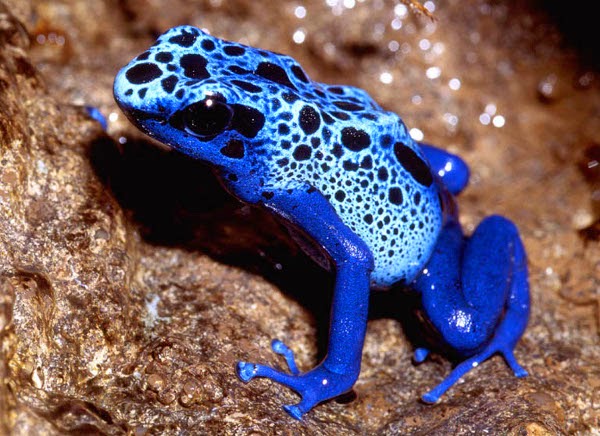
They are daytime habits. Some are capable of killing a person and among them is one of the most poisonous animals on the planet, the frog Phyllobates terribilis, whose venom is so powerful that only 1 gram can kill more than 5,000.
They are so lethal that there are only 2 species of birds and 1 species of snakes capable of surviving the poison with which the arrowhead frog attacks. Thanks to many studies it has been verified that the level of toxicity of the poison of these frogs is proportional to the striking or intense in the coloration of the skin, because as we mentioned earlier is where the poison of the arrowhead frog is lodged.
As can be easily deduced from its name, the poisoned golden frog (Phyllobates terribilis) is famous for being one of the most poisonous creatures in the world. Your skin has a toxic substance called batrachotoxin, and it is estimated that a single milligram can kill ten people.
Research has revealed that the poison originates from the diet of the frog. In fact, when they are removed from their natural habitat and their diet is changed, they are completely harmless animals.
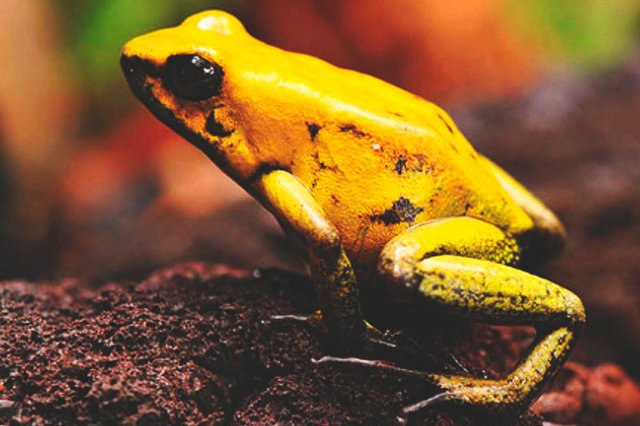
The poison acts by blocking the sodium channels of the cells, which prevents them from sending their signals to the muscles. The consequence is an inability of the body's muscles to relax, which ends up causing heart failure. But how is it possible that the frog is immune to its own poison?
A team of researchers from New York University has found the answer by studying another poisonous creature: the puffer fish. This species undergoes a genetic mutation that has allowed its sodium channels to adapt so as not to suffer the effects of its poison.
The authors of the study applied this knowledge to the golden frog and discovered that, indeed, it also undergoes a mutation that makes it resistant to the effects of its toxin. In fact, when they caused genetic mutation in rats, they also became immune to the poison.
Dangerous business
On the other hand, the frog has also been the victim of its own poison, because the illegal hunting of these animals by some pharmaceutical companies is leading to their disappearance. Annually thousands of these frogs are entering countries like Canada and Germany, where their alkaloids are isolated and then patented. Even the indigenous people are capturing them and then selling them.
The biologist Collazos affirms that "there is a need for awareness work, both nationally and internationally, on the protection of different wild species. The national government has not shown enough interest in carrying out such campaigns, even within the indigenous communities that frequent their habitat. This wonderful species is at high risk of extinction and not many seem interested in the subject. "
It is noteworthy that only one gram of this alkaloid can cost a thousand dollars. Faced with this threat of extinction, some companies tried to reproduce these frogs in captivity, but under these conditions they lose the ability to produce poison and become harmless. Due to this, the export of these animals to Europe and North America was increased for those who want to have them as pets.
The truth is that the frog is still in danger and his name has only been disseminated against his species, because being so poisonous has many factors that disfavor it. And despite the fear that the existence of this animal can cause us, the truth is that we have the duty to protect it and rescue it.
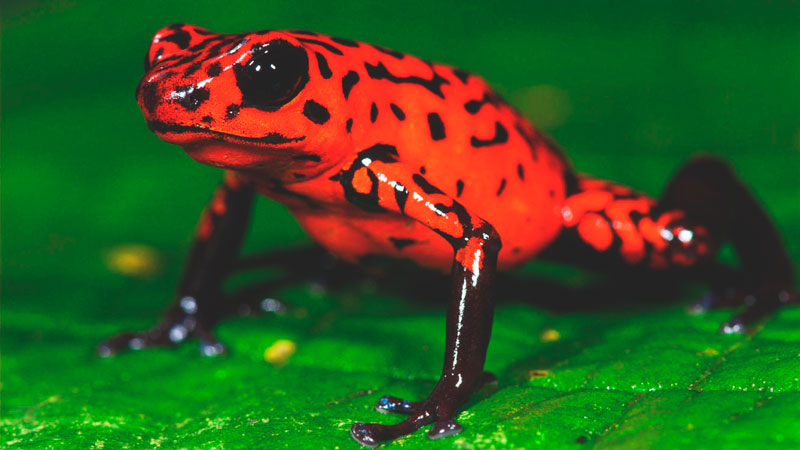
Deadly and invincible
No predator dares to hurt him, so he is said to be invincible. You can confidently pass by any predator with complete assurance that it will not harm you. An example of its potential is that if the frog walks on a surface, the poison remains active for a long time, affecting any animal that comes in contact with it, quickly causing death. There are even those who claim that if the poison of a single frog were to fall into a well or potable water supply, it would be enough to kill an entire population. Similarly, few are those who have dared to investigate or make documentaries about these animals. Not even the famous adventurers of the recognized television programs have been sent to these lands in search of the Frog Terribilis, since it is preferable to deal with snakes or crocodiles than to try to risk their lives with such a tiny and dangerous animal.
Thanks to human intervention, this species has been located or introduced into the Hawaiian Islands where these small amphibians of toxic and colorful skin can now be found and found, but originally these poisonous frogs are exclusively native or endemic to the varied territories of Central America and South America.
Regarding how much the arrowhead frogs live, these animals have an average life expectancy that covers approximately between 5 and 10 years in freedom, a number that increases when they live in captivity.
- Family: Dendrobatids
- Order: Anuros
- Class: Amphibians
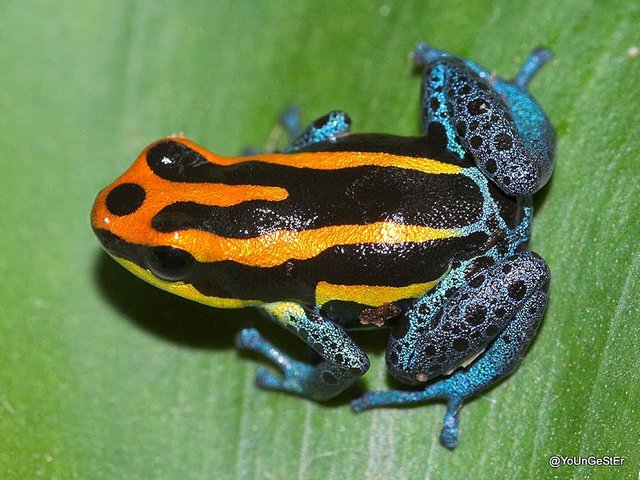
Why do all these frogs have those colors?
All these dart frogs, and also the similar frogs of Madagascar, have very striking colors and it is no coincidence.
Actually, it is a fairly widespread phenomenon in the animal kingdom, called "Aposematism", which consists of the presence of warning colors in species that are toxic ...
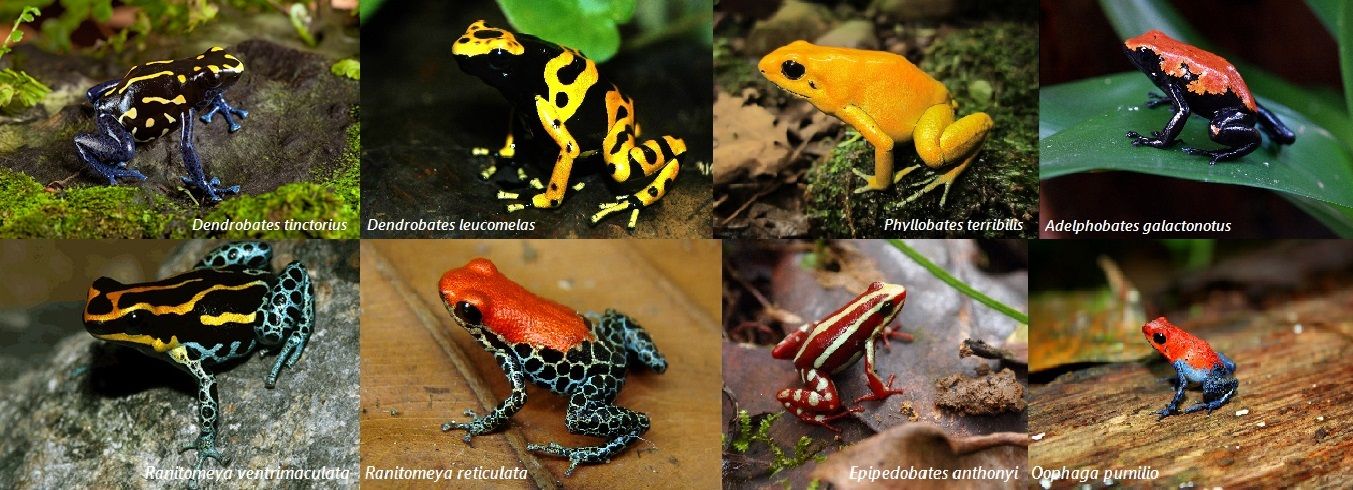
Reproduction
The breeding is in the rainy season. The female places 3 to 4 eggs in the dead leaves or under the rocks. The male is responsible for protecting the eggs and keeping them moist with urine. When the young are born, the female takes the tadpoles to places where there is water accumulated as in holes of trees. The volume of water in these average cavities 2.4 ml (0.084 imp fl oz; 0.081 US fl oz). The female feeds the tadpoles by laying unfertilized eggs in the bodies of water where they are. The tadpoles swim in a way that tells the female to lay the eggs. In nature, under natural conditions, the development lasts approximately 80 days.
Aggressiveness
The males of this species are very territorial. These defend themselves physically from others that are close to the oviposition sites. To indicate its territory the male emits some warning vocalizations
I hope you like it
References for more information

https://www.nationalgeographic.com/animals/amphibians/group/poison-dart-frogs/
https://www.ncbi.nlm.nih.gov/pmc/articles/PMC4790257/
http://www.bbc.com/earth/story/20150422-the-worlds-most-poisonous-animal
Being A SteemStem Member
Wow suprb👌👌
thank you I hope you like it
Excelente, Post 👌
Gracias